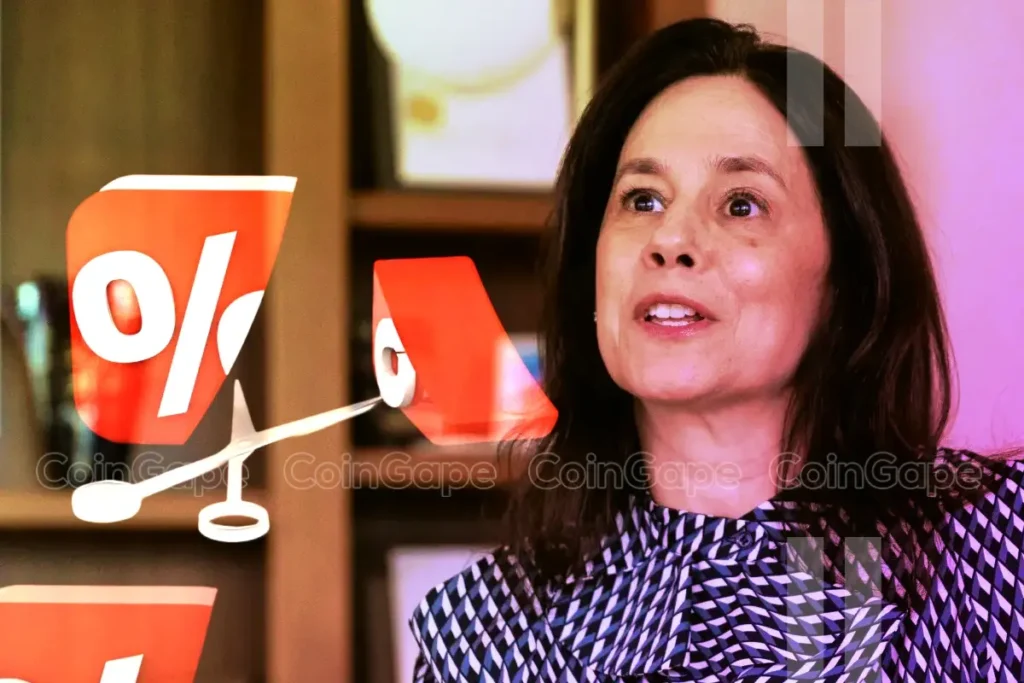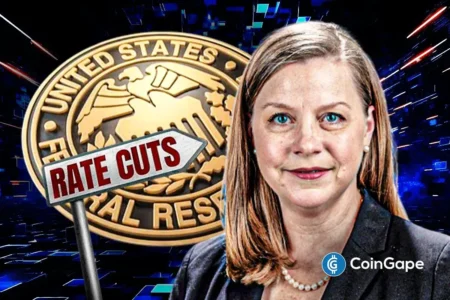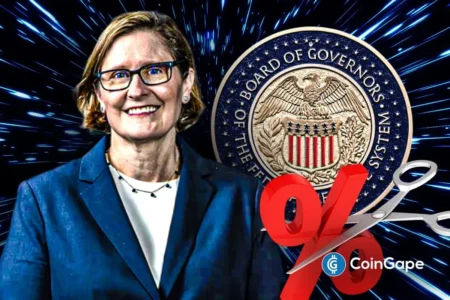Lorie Logan’s Insights on Fed Monetary Policy: A Cautious Approach Amid Rising Inflation and Labor Market Concerns
As the financial landscape evolves, the Federal Reserve Bank of Dallas President Lorie Logan has emerged as a pivotal voice in shaping monetary policy discussions. With inflation on the rise and signs of a weakening labor market, Logan’s recent comments reflect a careful approach to potential Fed rate cuts amid increasing calls for action. This insight comes at a crucial moment when the crypto market is reacting to anticipated shifts in policy, with Bitcoin prices on an upward trajectory.
Caution Against Rate Cuts
In a recent Bloomberg report, Lorie Logan emphasized the need for caution regarding any further Federal Reserve rate cuts. She highlighted the persistent risks associated with inflation, which remains above the Fed’s 2% target. Moreover, Logan expressed concern that the ongoing Trump tariffs could exacerbate inflation in the near future, suggesting that economic pressures could be more robust than current labor market weaknesses. The cautious sentiment Logan conveyed aligns with that of other Federal Reserve officials, including Chair Jerome Powell, who recently acknowledged inflationary pressures while noting that the effects of tariffs might be temporary.
Echoing Concerns on Inflation
Logan’s perspective is increasingly shared among her peers, further intensifying discussions around the inflationary landscape. Cleveland Fed President Beth Hammack has also advocated for restrictive monetary policy due to heightened inflation risks. Logan echoed these sentiments by forecasting a slower normalization path for policy adjustments to effectively curb inflation back to the desired target. This cautious stance indicates that Logan may not support a Fed rate cut at the upcoming Federal Open Market Committee (FOMC) meeting scheduled for October 28-29, emphasizing the complexities of managing inflation without prematurely easing monetary constraints.
Current Monetary Policy Assessment
In her analysis, Logan articulated her view that current monetary conditions are modestly restrictive, sufficient to exert downward pressure on inflation. This perspective reflects the Federal Reserve’s overarching goal to stabilize prices while balancing economic growth. The nuanced debate among Fed officials indicates that there is no consensus on the immediate need for rate cuts, as many members take divergent views of the labor market’s health and inflationary outlook. The implications of maintaining a cautious approach could be substantial, potentially impacting decisions on interest rates and overall economic stability.
Labor Market Dynamics
Logan acknowledged the potential downside risks within the labor market, pointing out that while conditions appear balanced, recent data indicates fluctuations that raise concerns. Reflecting this trend, the September ADP jobs report revealed disappointing job growth, suggesting a decline in labor market strength. The financial markets responded swiftly, pricing in a 97% likelihood of a 25-basis-point rate cut at the upcoming October meeting. This growing expectation underlines the tension between the desire for economic stimulation and the imperative to control inflation.
Divergent Perspectives Among Fed Officials
While some Fed officials, like Austan Goolsbee from the Chicago Fed, assert that the labor market remains stable and the broader economy is growing, others like Governors Michelle Bowman and Stephen Miran advocate for further rate reductions. Miran has notably called for a series of 50-basis-point cuts to stabilize economic conditions. This divergence among key Fed figures highlights the ongoing debate regarding the appropriate monetary policy response given the evolving economic environment and disparate interpretations of labor market data.
Navigating Uncertainty Ahead
As the Federal Reserve navigates the complexities of monetary policy in an era marked by rising inflation and mixed signals from the labor market, Lorie Logan’s cautious approach underscores the need for careful consideration of economic indicators before making significant policy shifts. The upcoming FOMC meeting will undoubtedly be a focal point for deliberations, as officials weigh the potential risks and benefits of rate cuts amidst an uncertain economic backdrop. The interplay between inflationary pressures, labor market dynamics, and monetary policy will continue to shape discussions at the Federal Reserve and influence market sentiment moving forward.
In conclusion, Lorie Logan’s insights reflect a broader concern among financial experts regarding the balance required to support economic growth while simultaneously addressing inflation. As we approach the next FOMC meeting, all eyes will be on the Fed’s decision-making process and its implications for economic stability and growth.
















